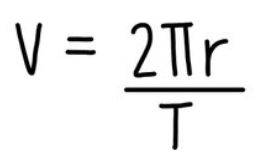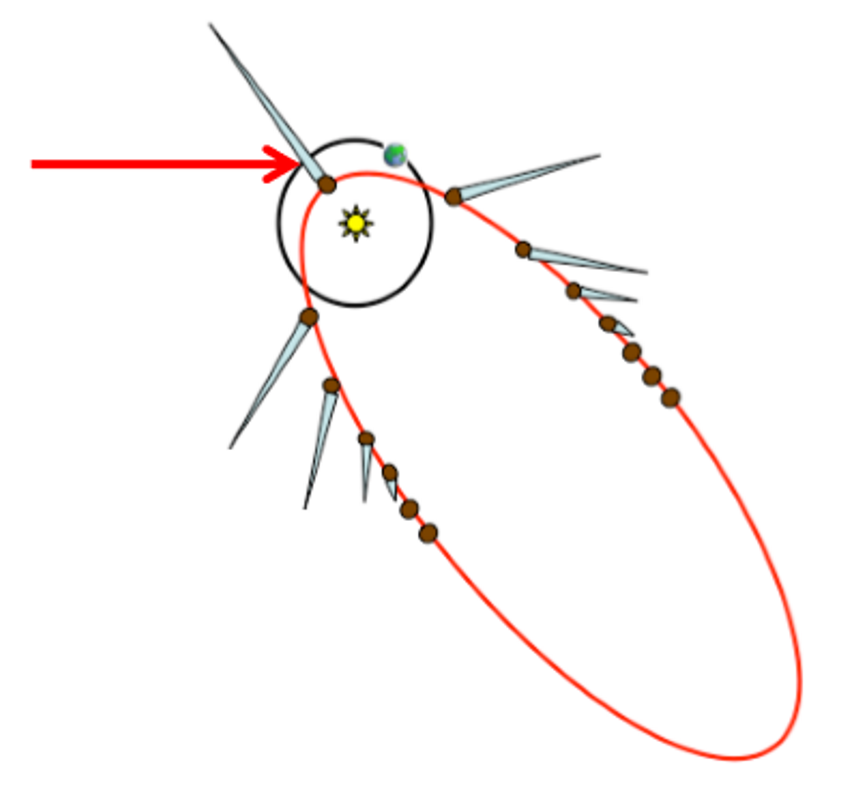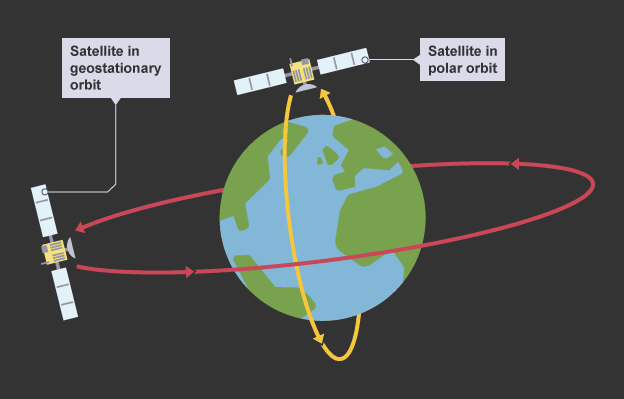Astrophysics - Celestial bodies, Orbits, + Satellites
The universe is a collection of billions of galaxies.
A galaxy is a collection of billions of stars and solar systems.
Our solar system is the milky way.
An object’s gravitational field strength depends on its MASS - so the moon has a weaker g strength than the earth.
Moon: a celestial body that makes orbit around a planet. Slightly elliptical.
Asteroid: a minor rocky planet that orbit a star.
Comet: a small, icy body that releases gases when warmed, producing a visible ‘tail’. ^^Highly elliptical orbits with the sun not at the centre.^^
Planet: a celestial body that is in orbit around a star and has cleared the neighbourhood around its orbit. ==Near circular orbit.==
Circular motion
When an object moves in a circle, its direction is constantly changing, therefore its velocity is too (because velocity is a vector quantity). A change in velocity results in acceleration, so an object moving in a circle is accelerating even if its speed stays constant.
An object will only acceralate if a resultant force acts on here, here the resultant force is centripetal force that acts towards the centre of the circle. Gravitational attraction provides the centripetal force needed to keep planets and satellites in orbit. Friction between roller skates and the floor, and tension in a string swinging a conker.


The comet will have the highest kinetic energy when it reaches it closest point to the sun. At this point, the sun’s gravitational force will be the greatest.

Satellites
A natural satellite includes moons and asteroids.
An artificial satellite is a man-made body places around the earth or another planet to collect information about it or used for communication purposes.
Example: the International Space Space (ISS)
2 types: polar orbits + geostationary orbits
Polar orbit
They take the satellite over the earth’s poles and travel close to the earth so they travel at very high speeds (nearly 8000m/s). Used for earth mapping and some weather satellites.
Geostationary orbit
Take 24 hours to orbit the earth, so they appear to remain in the same place when viewed from the ground. Much higher up than polar orbit so they travel more slowly (3000m/s). Used for communication and broadcast satellites.
